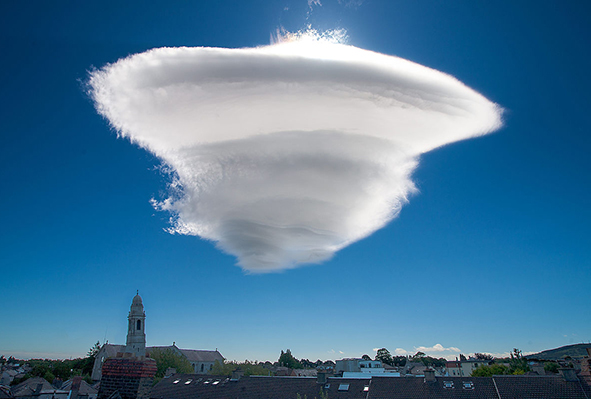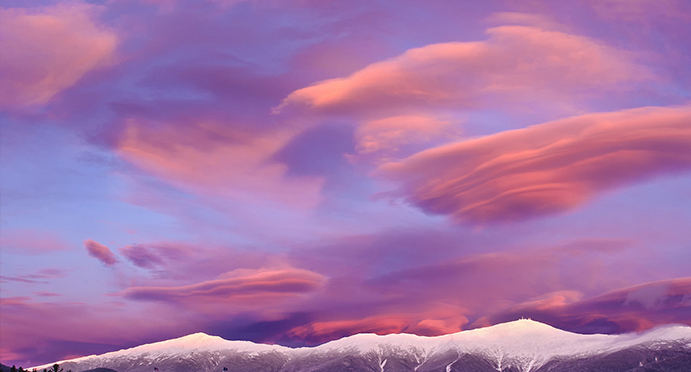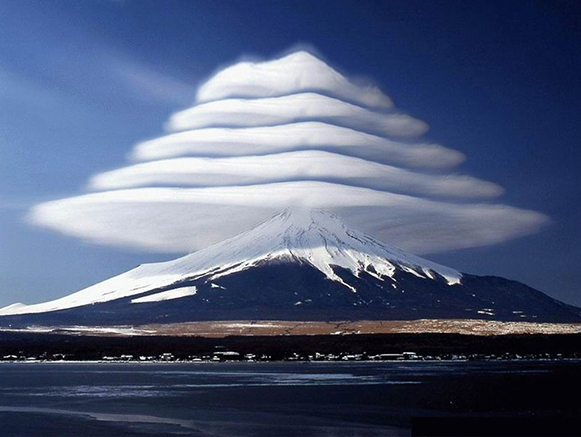What are
Lenticular Clouds?
Lenticular clouds get their name from the fact that they’re shaped like a lens or a saucer. This is why they’re also sometimes called “flying saucer clouds” and sometimes mistaken for UFOs. Some other nicknames for lenticular clouds include “cloudships,” “clouds of heaven” and “lennies.” They also have a fancy scientific name: Altocumulus lenticularis.
Lenticular clouds are formed when air moves over mountains, cooling sufficiently for condensation to take place. They are different from other clouds because they don’t move. They are continually reformed over the same location by new air rising up and over a mountain, condensing and producing the clouds.
 Lenticular clouds are also unique in that sometimes you may see bright colors — what scientists call “irisation” — along the edges of the clouds. This can give them a definite outer space feeling !
Lenticular clouds are also unique in that sometimes you may see bright colors — what scientists call “irisation” — along the edges of the clouds. This can give them a definite outer space feeling !
Airplane pilots will usually try to avoid flying near lenticular clouds. The waves of air that form the clouds can cause turbulence, which means riding in an airplane near lenticular clouds can be a bouncy, scary experience.
People that fly gliders, however, love lenticular clouds. The same air currents that can make flying in an airplane scary allow gliders to sail to great heights and long distances.

Lenticular clouds are formed when air moves over mountains, cooling sufficiently for condensation to take place. They are different from other clouds because they don’t move. They are continually reformed over the same location by new air rising up and over a mountain, condensing and producing the clouds.

Airplane pilots will usually try to avoid flying near lenticular clouds. The waves of air that form the clouds can cause turbulence, which means riding in an airplane near lenticular clouds can be a bouncy, scary experience.
People that fly gliders, however, love lenticular clouds. The same air currents that can make flying in an airplane scary allow gliders to sail to great heights and long distances.

